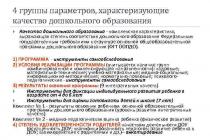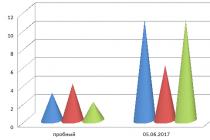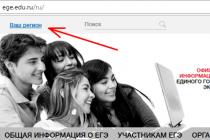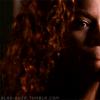The manual makes it possible to effectively organize the pedagogical process: it allows you to successfully solve problems of a didactic, health-improving and developmental nature; forms motor skills in basic types of movements and development of physical qualities; prevents musculoskeletal disorders; develops attention and memory.
"PARACHUTE"
Material:
Made from 8 wedges of multi-colored bologna fabric.
Target:
This manual makes it possible to effectively organize the pedagogical process:
Allows you to successfully solve problems of a didactic, health-improving and developmental nature:
Formation of motor skills in basic types of movements and development of physical qualities;
Prevention of musculoskeletal disorders;
Development of attention, memory;
Developing coordination of movements with music; develop pitch and timbre hearing, a sense of rhythm, and tempodynamic understanding; develop creativity and evoke positive emotions;
Nurturing positive, moral-volitional personality traits: activity, independence and organization;
Creating favorable conditions for active recreation, joyful, meaningful activities in collective games, entertainment, and activities.
Thus, the game guide “Parachute” not only entertains, but also develops.
We offer practical material on using this manual.
Game "Entertainers"
Goal: development of auditory and visual attention; activation of motor skills; formation to hold a beautiful static pose.
An “entertainer” is selected. Children walk in a circle, hold the parachute (first with their right hand, then with their left hand) and say the words:
In an even circle one after another
We are going step by step.
Stand still, together
Let's do it like this!
At the end of the words, the children stop, copy the movement shown by the “entertainer,” and try to “hold it.”
"Magical dream"
Goal: Relieving psychomuscular tension.
Eyelashes drooping...
Eyes are closing...
We are resting peacefully...
We are resting peacefully...
We fall asleep in a magical sleep...
Breathe easily... evenly... deeply...
Our hands are resting... Resting... falling asleep...
Resting... falling asleep...
The neck is not tense and relaxed...
Lips open slightly...
Everything is wonderfully relaxing...
Everything is wonderfully relaxing...
Breathe easily... evenly... deeply
(Long pause. Children come out of the “Magic Dream”)
We rested peacefully
We fell asleep in a magical sleep...
It's good for us to rest!
But it's time to get up! Let's clench our fists tighter.
We raise them higher
Stretch! smile!
Everyone open their eyes and stand up!
"It flies - it doesn't fly"
Goal: Development of speed of reaction and thinking.
All players hold onto the edge of the parachute and walk in a circle. The instructor names flying objects, such as an airplane, a bird, a butterfly, a beetle, etc., and the players raise their arms up, inflating the parachute above their heads. In other cases, you should not raise your hands.
"Who's under the parachute?"
Goal: Development of auditory perception.
Children walk in a circle, saying words; the leader in the center, under a parachute, recognizes the one who called.
“... you are now in the forest, we call you - AU!
... don’t yawn, find out who called you!”
"Rainbow"
Age: 5-7 years.
Goal: Consolidating knowledge of color, developing creative imagination and speech.
Children hold the parachute by the loops with both hands, standing around the parachute in such a way that everyone gets a sector of a certain color. While raising and lowering the parachute, say the words:
One, two, three, Rainbow take off!
Participants in the game are asked to name the color of their sector and describe their feelings. For example: red: “Oh, how hot we are, we are in Africa, the sun is shining brightly,” etc. Alternatively, you can talk about your mood corresponding to the color, or about an event in your life that the color associations reminded you of. After the game, they discuss which color evokes which emotions and sensations.
You can suggest using waste material, for example, corks, to complete creative tasks: put your mood on a sector of your favorite color.
“Left, right!”
Age: 4-6 years.
Goal: Development of arbitrariness of mental processes, spatial representations.
We raise the parachute with our left hand and lower it with our right.
Game "Funny Ball"
Goals: develop dexterity; cultivate emotional responsiveness.
The guys stand in a circle and hold in their hands a parachute on which a rubber ball lies, and, rolling the ball from one to another in an arbitrary direction, say:
You roll, funny ball,
The parachute will not let you fall,
Who has a funny ball?
He will perform a song (dance) for us! (The exercise will show us!)
The one on whom the poem ends completes the task indicated in the last line
Game "Empty Space"
Goal: development of reaction speed, agility, speed, attention.
Children, holding the parachute with their right hand, move clockwise, and the leader goes in the opposite direction with the words:
I walk around the house
And I look out the window,
I'll go to one
And I'll knock softly
Knock-Knock…
All the children stop. The student, near whom the leader stopped, asks: “Who came?” The presenter calls the child’s name and continues:
You have your back to me,
Let's run, you and I.
Which one of us is young?
Will he run home faster?
The leader and the child run in opposite directions. The first one to occupy the empty space near the parachute wins.
Game "Seal"
Goal: Development of reaction speed and dexterity.
How to play: Children sit on the floor, stretching their legs and hiding them under the “parachute”. A child, a “seal,” is crawling under the “parachute,” trying to touch the children’s legs. They do not allow him to do this, squeezing his legs.
Train game
Goal: developing the ability to combine movements with words and music.
The train is flying at full speed! Children, holding the parachute with their left hand, move in a circle on their knees, and make circular rotational movements with their right hand.
Wow, wow, wow! Raise the parachute up and then lower it.
The diesel locomotive hummed: “oooh!” Repeat the movements.
I took the kids home. The same movements, only in the other direction,
“Doo-doo-doo! Doo-doo-doo! changing hands.
I’ll get everyone there in no time!”
Game "Salute"
Goal: Developing the ability to act in a coordinated manner in a team.
Children collect as many balls as possible from the pool and place them on the parachute. Then they take the parachute by the edges and slowly raise and lower it on the count of “one, two, three.” After the word “three!” throw balls up and try to catch them. Then they collect the balls, put them back on the parachute, and the game repeats.
Waves" or "Flame"
Age: 2-7 years.
This game is suitable for any age. It helps both activate the group and calm it down. We start with small waves/sparks, then we swing the parachute more and more, creating a storm/fire. Then we gradually reduce the waves/fire, saying that the wind/fire has become weaker, the waves/sparks are subsiding/extinguishing, and the sea is calm.
You can replace words with music. Loud or fast music - strong waves/fire. Quiet or slow music - weak waves/fire.
"Popcorn"
Goal: Creation of a favorable psycho-emotional state.
Additional equipment - many small balls, balls.
With the parachute on the ground, pour out small balls. Then, at the leader’s signal, all participants must stand by the parachute, lift it and “slam” the parachute (make a quick up and down movement) so that the balls rise into the air. (Caution: Do not allow the group to pull on the parachute - it may break.) Continue “cooking the popcorn” until all the balls pop out.
"Three Bears"
Goal: Creating a favorable psycho-emotional state, performing movements in accordance with the text.
3 bears were going home (children are walking in a circle with a parachute)
Dad was big, big (the parachute is up)
Mom with him - shorter (hands with a parachute at chest level)
And my son is just a little baby (they crouch, lowering the parachute)
He was very small
Walked with rattles (the parachute is rhythmically raised and lowered)
Ding - ding!
"Spring"
Goal: Development of speech, the ability to move rhythmically in accordance with the text.
Sunshine, sunshine
Golden Bottom
Burn, burn clearly
So as not to go out (they walk in a circle, carry a parachute)
A stream ran in the garden
A hundred rooks have flown
And the snowdrifts are melting, melting
And the branches grow (they run in a circle, holding a parachute)
(raising, lowering parachute) (slow squat)
(climb up the parachute)
"Changing Places"
Age: 5-7 years.
Goal: Development of color perception, mental and motor abilities.
In this game, each player will have a different color (for example, green, blue, red, etc.)
Rules of the game: at the beginning, everyone holds on to the parachute laid out on the ground. At the leader's signal, participants quickly raise the parachute high above their heads and then hold it while it slowly lowers to the ground. There is no need to pull the parachute down; just hold him while he glides through the air. At the same time, at the moment of maximum rise of the parachute, the presenter loudly names a color. So, if the leader shouts “red,” everyone who is holding on to the red sector of the parachute must release the parachute and, after running under it, change places with one of the players on the opposite side. It doesn't matter whether the player ends up in exactly the same place where his partner was standing, as long as he runs under the parachute to the opposite side. While some of the players are under the parachute, the rest are slowly pulling the parachute down, trying to catch the game participants running under the parachute. If you managed to catch someone, help this player get out and let him find a new place near the parachute.
Option
Instead of the names of flowers, the presenter loudly calls the months of the year. Participants in the game, born in the named month, release the parachute and change places, running under the parachute. This game can also be played by counting in order from 1 to 8 or by naming the colors of the clothes the participants are wearing.
“Three steps, jump!”
Age: 4-7 years.
Goal: Development of arbitrariness of mental processes, the ability to listen to instructions from an adult, development of coordination of movements, orientation in space, relieving neuropsychic tension, raising mood.
We take three steps to the right, jump, the parachute inflates.
"Magic Bubble"
Age: 3-7 years.
Goal: Emotional release.
Inflate the parachute canopy (“bubble”) as much as possible (we raise our arms up), with the word “bang!” (we scream loudly) - they blew it away.
"Bullseye"
Age: 3-7 years.
Goal: Development of coordination of movements, ability to interact with each other, emancipation.
The presenter throws several soft balls onto the raised parachute
(“apples”) The children's task is to prevent them from falling to the floor.
“A breeze for ... (child’s name)
Age: 2-7 years.
Goal: Liberation of children, development of coordination of movements, attention, sense of rhythm, relieving neuropsychic tension.
The presenter calls the name of the child, who is placed in the center on a parachute, sitting, lying down, as he likes. Children blow on it, making waves.
"Space trip"
Age: 3-7 years.
Goal: Liberation of children, development of coordination of movements, attention, sense of rhythm, relieving neuropsychic tension.
The presenter introduces the children to two characters who need to be launched into space by a rocket.
The parachute is lowered, the children are waiting for the adult's command. “3-2-1-launch!” (loudly, we all pronounce the command together). We raise the dome sharply upward - the hero flies into space! This game causes a strong surge of emotions in children.
"Bugs"
Age: 2-7 years.
Purpose: Relaxation, psychological study.
A subgroup of children (boys) are holding a parachute, while the girls are lying in a “daisy” position. The parachute rises, the “bugs” children move their legs and arms chaotically, the parachute descends, the “bugs” freeze. Then the subgroups switch places.
"GOOG night kids"
Age: 2 -7 years.
Goal: Relieving psychomuscular tension.
3-4 adults inflate the parachute, while the children lie like a daisy. The adult invites the children to feel like a feather, to feel the breeze.
"Terem-Teremok"
Age: 2 -7 years.
Goal: Relieving psycho-emotional stress.
3-4 adults inflate the parachute and say: “Terem-terem-teremok, someone lives in the little house...” It began to rain: drip-drip-drip. The children are hiding in the house.
"Loaf"
Age: 3 -7 years.
Goal: Team unity, congratulating the birthday person on his birthday.
The birthday boy is positioned in the center of the parachute, the rest of the children say, “How on Olya’s name day we baked a loaf...
Loaf-loaf, choose whoever you want!”
"Who's missing?"
Age: 4-7 years.
Goal: Development of attention and memory.
All children stand in a circle, hold on to the parachute (with their eyes closed), the leader hides one child under the parachute. The children's task is to find the one who is hiding.
"Cat and Mouse"
Age: 4-7 years.
Goal: Developing the ability to cooperate, mutual understanding, the ability to perceive and follow the rules of the game.
The game is played on the principle of the game “Mousetrap”. A subgroup of children raises a parachute and says words, while another subgroup runs under the parachute. Whoever remained under the parachute was caught. Then the subgroups switch places.
You can not only run, but also crawl on all fours.
"Red in, blue out"
Goal: Development of orientation in space, motor skills.
The parachute is great for active outdoor games with simple rules. For example, you can announce that children can only enter through the red sector, and exit opposite, through the blue, and run back from outside the parachute, so that there are no collisions inside. Adults raise and lower the parachute, and children run in from the red entrance, and run out where the blue exit is, if they were not touched by the parachute. If the parachute has already dropped, then the children stop and wait for a new day.
"Snowdrift"
Goal: Improving the ability to run without bumping into each other and act on a signal.
In this game, all children must hide inside under a parachute when they hear the word “snowdrift.” Adults raise and lower the parachute, swinging it a little, and children run around, or run inside, then run out again. At the word “snowdrift” the parachute is lowered.
The wind is blowing and blowing,
And blew up a big snowdrift.
"Cat and Mouse"
Goal: Development of dexterity, evasiveness, and negotiation skills.
This game requires a soft carpet or lawn to crawl on and a large parachute. All but the two leaders hold the parachute by the edges. Both presenters take off their shoes, and both agree that they will not walk, but only crawl on their knees. The “cat” player crawls on top of the parachute, and the “mouse” player crawls under the parachute in a circle closer to the edge. At this time, all the other players sitting around the parachute create waves, and thus prevent the “cat” from seeing how the “mouse” moves under the parachute. The task of the “cat” is to notice and catch the crawling “mouse” through the fabric. You cannot go beyond the edge of the parachute.
"Dashes"
Goal: Improving the ability to quickly respond to a signal, evasiveness, and speed.
Children holding a parachute. “1,2,3, - raise the parachute, Petya, Olya - run!” Children change places, running under the parachute, which descends. We need to have time to run so that the parachute doesn’t hit them.
"Duck - Goose"
Goal: Development of speed, agility, reaction.
In this game, the parachute acts as a smooth circle around which all players squat. The driver walks clockwise and strokes the person next to him on the head, saying:
"Duck! Duck! Duck! Goose!"
Once he has chosen the goose, he must run away from the selected player around the parachute. The Goose should jump up and run after the driver, and try to get rid of him before the driver runs and sits in the Goose’s place.
If the goose catches up with the driver, he leads again. If the driver managed to run and take the place of the goose, then he becomes the new driver, and now he chooses a goose for himself.
"Swamp"
Goal: To evoke in children an emotionally positive response to play action and friendly relationships.
Players sit on the floor in a circle, holding the edge of the parachute under their chin and stretching their legs straight out in front of them. When everyone is seated, everyone begins to repeat the name of their favorite vegetable. The hubbub produced by the players is reminiscent of the noise that occurs in a swamp at night. One player is chosen as a “merman” and climbs under the parachute. The merman carefully pulls another player by the legs, who disappears under a parachute and becomes a merman himself. The game ends when all participants are under the parachute.
"Shark in the sea!"
Goal: Compliance with the rules of the game, development of physical qualities.
One student is chosen as a “shark”, all other players create waves. The shark chases in search of its victims under the surface of the water (parachute).
If a shark grabs someone's leg, the victim is sent under a parachute and also becomes a shark. Players swinging the parachute cannot release the parachute until they are caught, nor can they press the parachute to the ground to block the sharks' path. The game ends when there are too many sharks and too few people left!
"Tumbleweed"
Age: 4 -7 years.
Goal: Development of dexterity, attention, coordination of movements, ingenuity, interaction.
The presenter selects 3 players (they are near the parachute). Other children inflate the canopy as much as possible, the task of 3 players is to run while the parachute is lowering. If the dome touches them, the participant is eliminated from the game. The child who wins the game receives a prize.
"Dance with a Parachute"
Age: 5 -7 years.
Goal: Development of arbitrariness, motor creativity.
An approximate dance pattern: take the handle of the parachute, jump 3 times to the right, put the parachute down, clap “Ti-ta-ta-ta,” spin around, take the canopy, etc. You can come up with your own dance pattern.
"Circle"
Age: 5-7 years.
Goal: Development of the ability to cooperate, mutual understanding and trust between children, cohesion.
Leading:
- Guys, grab the handles of the parachute and pull it into an even circle. The circle is a symbol of unity, strength, friendship.
Now I suggest you complete a number of tasks that need to be completed simultaneously so that the integrity of the circle is not broken.
Before completing the task, you have a few seconds to try to negotiate without words.
Everyone sit down and then stand up.
Lower one hand and make a clockwise circle.
Make wave-like movements.
Questions: On whom and what did the result depend on when completing tasks?
"Good Animal"
Age: 5-7 years.
Goal: to unite the children's team, children to understand the feelings of others, provide support and empathy.
The presenter says in a quiet, mysterious voice: “Stand in a circle and grab the handles of the parachute. We are one big kind animal. Let's listen to how it breathes! Now let's breathe together! As you inhale, take a step forward, as you exhale, take a step back (3 times). This is how the animal not only breathes, this is how its heart beats. Let's hear it beat! (without inhalation and exhalation), while performing strong kicks. Knock - step forward, knock - back (3 times). We all take the breath and heartbeat of this big, kind animal for ourselves.
"Fungus"
Age: 3 - 5 years.
Goal: Relieve emotional and muscle tension.
Everyone holds on to the handles of the parachute and smoothly lifts it three times, and on the third time everyone, without releasing the handle, goes inside the parachute, and it smoothly falls on top of everyone.
The breeze is blowing,
Come under the fungus!
"Carousels"
Goal: Development of rhythmic movements, the ability to coordinate them with words, run and walk in a circle.
With a parachute, you can play many round dancing games with movement in a circle, slowing down and speeding up, for example, carousel.
Barely, barely
The carousel started spinning.
And then, then, then
All run-run-run!
Wait, don't rush,
Stop the carousel!
“Sparrows, go home!”
Age: 3 - 5 years.
Goal: To evoke an emotionally positive response to the game action in children.
Adults raise and lower the parachute, and under it children sparrows jump on two legs, flapping their wings. When the command “fly out quickly” sounds, all the children run out from under the parachute, and then at the command “sparrows, go home” they all fly back, trying not to hit or drop anyone while running.
Among the white doves
A gray sparrow jumps.
Among the white doves
A gray sparrow jumps.
Sparrow bird,
Gray shirt,
Take off quickly!
Run out, don't be shy!
They flew, circled,
And they returned back.
Sparrows, go home!
"Rainbow Country"
Age: 5-7 years.
Goal: Correlating color with mental characteristics, creating a friendly atmosphere in the group, mutual assistance, trust, cohesion, friendly and open communication with each other and with adults.
We spread the parachute on the floor and offer to accommodate the “tenants” (small toys, pictures depicting fairy-tale characters of different characters, expressing different emotions). Participants are invited to tell why the toys were placed this way and come up with a story about them. Those. When working with color, its psychological characteristics are necessarily clarified.
You can use the parachute as a “Mood Mat”. Before breakfast, children get ready for the parachute, talk about their mood, choose a sector of a certain color and sit in their sector. And in the evening, before going home, the children also get together on a parachute and talk about the past day and changes in mood, why they happened.
Card index outdoor games and fun
with a play parachute.

Material:
The parachute is made of 8 wedges of multi-colored bologna fabric.
Target:
This manual makes it possible to effectively organize the pedagogical process:
-allows you to successfully solve problems of a didactic, health-improving and developmental nature;
-promotes the formation of motor skills in basic types of movements and the development of physical qualities;
-prevention of musculoskeletal disorders;
Nurturing positive, moral-volitional personality traits: activity, independence and organization;
Creating favorable conditions for active recreation, joyful, meaningful activities in collective games, entertainment, and activities.
AND gra "Entertainers"
Goals: development of auditory and visual attention; activation of motor skills; formation to hold a beautiful static pose.
Game description . An “entertainer” is selected.
Children walk in a circle, hold the parachute (first with their right hand, then with their left hand) and say the words:
In an even circle one after another
We are going step by step.
Stand still, together
Let's do it like this!
At the end of the words, the children stop, copy the movement shown by the “entertainer”, and try to “hold” it.
Game "Funny Ball"
Goals: develop dexterity; cultivate emotional responsiveness.
Game description .
The guys stand in a circle and hold in their hands a parachute on which a rubber ball lies, and, rolling the ball from one to another in an arbitrary direction, say:
You roll, funny ball,
The parachute will not let you fall,
Who has a funny ball?
The desire will give us!
The one on whom the poem ends performs the task chosen by the players.
Game "Empty Space"
Target: develop reaction speed, agility, speed, attention.
Game description .
Children, holding the parachute with their right hand, move clockwise, and the leader goes in the opposite direction with the words:
I walk around the house
And I look out the window,
I'll go to one
And I'll knock softly
Knock-Knock…
All the children stop. The student, near whom the leader stopped, asks: “Who came?” The presenter calls the child’s name and continues:
You have your back to me,
Let's run, you and I.
Which one of us is young?
Will he run home faster?
The leader and the child run in opposite directions. The first one to occupy the empty space near the parachute wins.
Game "Seal"
Target : Develop reaction speed and agility.
Game description :
Children sit on the floor, stretching their legs and hiding them under the “parachute”. A child, a “seal,” is crawling under the “parachute,” trying to touch the children’s legs. They don't let him do this, tucking their legs in
Game "Change of Places"
Target: develop spatial orientation and coordination abilities, develop the ability to respond to a given task without errors; develop speed and strength abilities of children.
Description of the game.
Children stand in a circle, facing the parachute, with their hands grasping the color sector. Children say the words:
It's boring, it's boring for us to stand
Isn't it time to go for a run?
And change places.
The teacher continues and names any color sector - “Red, run!” Children standing under this color run under a parachute and change places with other children.
Game "Artist"
Target :
Description of the game.
The driver is chosen - the artist, the rest of the players stand in a circle, choosing the colored sector of the parachute. The players, holding the parachute, walk in a circle and say the words:
Paints and pencils,
How good!
Yellow, red, blue,
Choose any one for yourself!
After these words, the players stop, and the driver, the artist, names any color. To the music, the players standing under the named color, together with the driver, begin to run around the parachute. As soon as the music turns off, the children try to take the empty seats. Those who are left without a place become a driver - an artist.
Game "Sparrows"
Target : Develop speed and coordination abilities, the ability to navigate in space. Develop the ability to quickly and clearly respond to a signal.
Game description:
The driver is selected. The remaining sparrow players, holding the edges of the parachute, walk in a circle and say the words:
Nimble sparrows jumped along the branches.
The nimble sparrows flew high.
One sparrow got lost in the field,
Left without a nest!
Whoever the driver stopped next to was a “homeless sparrow.” Players run in different directions trying to be the first to occupy an empty nest.
Game "Be careful"
Target: develop motor activity, thinking, and speed of reaction to a verbal signal.
Description of the game.
Children stand in a circle, holding onto a parachute. The instructor shows red - the children lower the parachute down. The instructor shows blue - the parachute is raised up. Yellow color - sit down; green color – walking at a side step in a circle, etc. Tasks can be changed, complicated and supplemented with new motor actions.
Game "Magic Parachute"
Target: develop attention and memory, the ability to quickly respond to a verbal signal.
Description of the game.
Children stand in a circle, holding onto a parachute. At the signal, all players close their eyes. The instructor, walking around the circle, quietly selects one player. At a signal, the children, without opening their eyes, make a big wave with a parachute and press it to the floor. The player chosen by the instructor tries to hide under the parachute unnoticed. Children open their eyes and try to guess who is hiding under the parachute.
Game "Rainbow"
Target: consolidate knowledge of color, the ability to respond to a signal; develop attention, imagination, speed.
Description of the game.
Participants hold the parachute with both hands, standing around the parachute in such a way that everyone gets a sector of a certain color. While raising and lowering the parachute, say the words:
One two Three,
Rainbow take off!
The instructor selects two colors that are not adjacent and names them. The participants, sharply raising their arms, raise the parachute upward, forming a dome, and those standing near the sector of the named color quickly run under it. This is how the instructor names all the colors. The main thing is to listen carefully and respond quickly!
Game "Carousel" with music.
Target: develop the ability to navigate in space, move at different paces; develop the emotional sphere and a sense of involvement in the common cause.
Description of the game.
Each participant takes one hand to the middle of the colored sector. And together with the psychologist they move in a circle to the music: The direction of movement changes.
After several repetitions (3-4) at the end the words “The game is over” are said and the game ends.
Game "Salute"
Target: develop reaction speed, activate motor skills, cultivate the ability to act in a team in a coordinated manner.
Game description .
Collect as many balls as possible from the dry pool and place them on the parachute. Then they take the edges of the parachute with both hands and slowly lift it, saying the words “one, two, three! " After the word “three! "throw the balls up. Then they run and collect the balls, put them back on the parachute, and the game repeats again.
Game "Orbit"
Target: on team cohesion.
Additional equipment - a large ball.
Description of the game.
At the beginning of the game, place a large rubber ball on the parachute. The ball is the “planet”, the parachute is the “solar system”, and the center of the parachute is the “Sun”. Ask participants if they can make a planet orbit near the edge of the solar system without falling out of the solar system (falling from a parachute).
Train game
Target: learn to combine movements with words and music.
Description of the game.
The train is flying at full speed! Children, holding the parachute with their left hand,
on their knees moving in a circle,
make circular motions with your right hand
rotational movements.
Wow, wow, wow! Raise the parachute up
then lowered.
The diesel locomotive hummed: “oooh!” Repeat the movements.
I took the kids home. The same movements, only in the other direction.
“Doo-doo-doo! Doo-doo-doo!
I'll get everyone there in no time
An apple on a saucer
For this game you need a parachute and a large light ball.
The team unites, pulls the parachute, then begins to gently swing the parachute, trying on the one hand to help the ball roll along the parachute along the edge, on the other hand, making sure that the ball does not fall from the parachute. This game is designed for older preschoolers and schoolchildren; it requires a lot of teamwork and active interaction.
Funny balls
This game requires a lot of small foam balls that can bounce on a parachute. All players hold the parachute by the edge, stretch it, and then create waves so that the balls bounce over the parachute. At the same time, we try not to drop the balls from the parachute, and ask the children to bring the scattering balls and throw them back onto the parachute. This game causes great delight even among one and a half year old children. It is important when playing with children to keep the parachute low enough so that children can see the bouncing balls.
Cat and mouse
This game requires a soft carpet or lawn to crawl on and a large parachute. All but the two leaders hold the parachute by the edges. Both presenters take off their shoes, and both agree that they will not walk, but only crawl on their knees. The “cat” player crawls on top of the parachute, and the “mouse” player crawls under the parachute in a circle closer to the edge. At this time, all the other players sitting around the parachute create waves, and thus prevent the “cat” from seeing how the “mouse” moves under the parachute. The “cat’s” task is to notice and catch the crawling “mouse” through the fabric. You cannot go beyond the edge of the parachute.
Duck - goose
In this game, the parachute acts as a smooth circle around which all players squat. The driver walks clockwise and strokes the person next to him on the head, saying:
"Duck! Duck! Duck! Goose!"
Once he has chosen the goose, he must run away from the selected player around the parachute. The Goose should jump up and run after the driver, and try to get rid of him before the driver runs and sits in the Goose’s place.
If the goose catches up with the driver, he leads again. If the driver managed to run and take the place of the goose, then he becomes the new driver, and now he chooses a goose for himself.
WAVES
Holding the parachute together, players raise and lower it with quick, sharp movements, creating “waves.” Make sure players are raising the parachute rather than pulling it down. Alternate between calm seas and stormy waves. Use this activity to help students feel confident in playing with the parachute. Notice any manifestations of irresponsible behavior and stop them promptly.
SWING
Performed in a sitting position. Students pull the parachute back and forth with calm, unhurried movements, similar to swinging on a swing.
SWAMP
Players sit on the floor in a circle, holding the edge of the parachute under their chin and stretching their legs straight out in front of them. When everyone is seated, everyone begins to repeat the name of their favorite vegetable. The hubbub produced by the players is reminiscent of the noise that occurs in a swamp at night. One player is chosen as a “merman” and climbs under the parachute. The merman carefully pulls another player by the legs, who disappears under a parachute and becomes a merman himself. The game ends when all participants are under the parachute.
SHARK IN THE SEA!
One student is chosen as a “shark”, all other players create waves. The shark chases in search of its victims under the surface of the water (parachute).
If a shark grabs someone's leg, the victim is sent under a parachute and also becomes a shark. Players swinging the parachute cannot release the parachute until they are caught, nor can they press the parachute to the ground to block the sharks' path. The game ends when there are too many sharks and too few people left!
ONE-ARMED RUNNING
Additional equipment - music (optional)
Have each player hold the parachute with one hand, with the other out to the side for balance. Start running in a circle in one direction, then change hands and running direction. A possible game option is to use music as a signal to change the running direction (i.e., the direction changes every time the music stops).
CLOCK FACE
Additional inventory - Stopwatch
From the players holding the parachute at waist level, one participant is chosen - this is “noon”. A mark is made on the ground corresponding to its location. At the leader’s signal, everyone runs clockwise, continuing to hold the parachute. How soon can “noon” return to its original place? The task can be repeated for the group to try to improve the time shown.
TAKE-OFF AND GLANDING
At the beginning of the game, everyone holds on to a parachute laid out on the ground. At the leader's signal, participants quickly raise the parachute high above their heads and then hold it while it slowly lowers to the ground. There is no need to pull the parachute down; just hold him while he glides through the air.
UNDER THE CAP
Holding the edges of the parachute, fill it with air. While still holding the edge of the parachute, walk under it to the center and then back. You can also gather everyone in the center and release the parachute so that it smoothly descends, hiding all the players under it.
CHANGE OF PLACES
Before the game starts, each participant must take hold of a sector of a parachute of a certain color (this is only possible if your parachute is multi-colored). In this game, each player will have his own color (for example, green, blue, red, etc.) The rules of the game are the same as in “Takeoff and Gliding”, while at the moment of the maximum rise of the parachute, the leader loudly calls any color. So, if the leader shouts “red,” everyone who is holding on to the red sector of the parachute must release the parachute and, after running under it, change places with one of the players on the opposite side. It doesn't matter whether the player ends up in exactly the same place where his partner was standing, as long as he runs under the parachute to the opposite side. While some of the players are under the parachute, the rest are slowly pulling the parachute down, trying to catch the game participants running under the parachute. If you managed to catch someone, help this player get out and let him find a new place near the parachute.
Second option
CAVE
Grab the edge of the parachute with both hands using an overhand grip and lift the parachute above your head. Take a few steps towards the center, filling the parachute with air. Free one hand. With your other hand, pull the parachute down over your head and behind your back. Sit on the ground, keeping the edge of the parachute close to the ground. Stay inside the parachute until air begins to escape from underneath it. After a while, raise the parachute, stand up and dive out from under the parachute.
CHAMPIGNON
Grasp the edge of the parachute with both hands using an overhand grip and fill the parachute with air. Pull the edge of the parachute towards the ground, keeping the air inside. This is how “champignon” is made.
RUN-GRAB
By Place throwing bags, jump ropes, balls, etc. under the parachute. Count the participants by numbers. At the beginning of the game, all participants grab the parachute with both hands using an overhand grip and lift it high. Then the presenter calls the participant’s number and some item. The participant with this number rushes under the parachute, grabs the desired object and returns back before the air comes out from under the parachute.
ORBIT
Additional equipment -Big ball
At the beginning of the game, place a large rubber ball on the parachute. The ball is the "planet", the parachute is the "solar system", and the center of the parachute is the "Sun". Ask participants if they can make a planet orbit near the edge of the solar system without falling out of the solar system (falling from a parachute).
TOSSING THE BALL
Additional equipment - Big ball
Place a rubber ball in the center of the parachute. By raising and lowering the parachute, you can throw and catch the ball. Once the players have mastered the task, try adding a second ball.
POPKOR
Additional equipment - Lots of small balls
With the parachute on the ground, pour 100 (or more) small balls onto it. Then, at the leader’s signal, all participants must stand by the parachute, lift it and “slam” the parachute (make a quick up and down movement) so that the balls rise into the air. (Warning: Do not allow the group to pull on the parachute - it may break). Continue “cooking the popcorn” until all the balls pop out.
In addition to or instead of the balls, you can throw a large rubber ball, some comets, other large (but light) objects, and even a water balloon or two!
Goal: creating conditions for comprehensive physical development and satisfying the natural biological need of children for movement
TASKS:
Teach preschoolers to apply motor experience in play activities.
Develop dexterity, speed of reaction, eye, coordination of movements, speed, attention, imagination.
Develop the ability to act in a coordinated manner in a team; creativity, independence and initiative in motor play actions, emotional responsiveness.
The didactic manual “Magic Parachute” is intended for preschoolers of middle and older age.
Parachute games are fun team games. Games can be very active, moving, or they can be quiet and calm.
A different number of people can participate in the game at the same time, depending on the size of the parachute and the number of sectors.
Games with a parachute develop imagination when the players “turn” into animals, and the parachute into a multi-colored cloud, rainbow, carousel or train.
You can play both indoors (in a sports hall or music hall) and outdoors.
In groups of primary preschool age, a parachute can also be used. They lift him up and down, walk with him in a circle, while singing children's songs, rhymes or counting rhymes.
During the participation of children in collective games and play exercises using the “Magic Parachute” manual, a special environment is created that requires children to be able to coordinately solve problems of a motor nature, obey certain rules, use well-known movements in accordance with game situations, and also independently find different ways to complete the task, come up with new games, game options and rules for them.
As a result of using the didactic manual “Magic Parachute”, preschoolers have well-developed coordination of movements, increased motor activity, and emotional mood; preschoolers show friendly relations in the game, interest in physical education increases; preschoolers show high results in basic types of movement, their imagination is developed; children are able to apply the acquired motor experience in independent play activities.
A set of games and gaming exercises
Game "Empty Space"
(older age)
Goal: to develop reaction speed, agility, speed, attention.
Description of the game.
Children, standing around the parachute, choose the driver with a counting rhyme.
Example of a counting rhyme:
One two three four five.
We can't count our friends.
And life is hard without a friend,
Get out of the circle quickly!
Children, holding the stick on the edges of the parachute with their right hand, move clockwise, and the driver goes in the opposite direction with the words:
I walk around the house
And I look out the window,
I'll go to one
And I'll knock softly
Knock-Knock…
All the children stop. The child, near whom the driver stopped, asks: “Who came?” The driver calls the child's name and continues:
You have your back to me,
Let's run, you and I.
Which one of us is young?
Will he run home faster?
The driver and the child run around the parachute in opposite directions. The first one to occupy the empty space at the parachute wins.
Game "Funny Ball"
(older age)
Goal: to develop dexterity, coordination of movements, attention, emotional responsiveness.
Description of the game.
Option N 1.
The guys stand in a circle, holding the parachute with both hands by the sticks on the edges. The physical education instructor throws a medium-sized rubber ball onto the sectors of the parachute (attention: the ball should not be larger than the hole in the center of the parachute).
Children, raising and lowering different sectors of the parachute, try to roll the ball so that it does not fall into the hole, pronounce the words:
You roll, funny ball,
The parachute will not let you fall.
Who has a funny ball?
Try to convey!
Option N 2
The guys stand in a circle, holding the parachute with both hands by the sticks on the edges. The physical education instructor throws a medium-sized rubber ball onto the sectors of the parachute (attention: the ball should not be larger than the hole in the center of the parachute). Children, raising and lowering different sectors of the parachute, try to roll the ball so that it falls into the hole. At the beginning of the game, children say the words: One, two, three,
Hit the target!
Game "Carousel"
(middle, older age)
Goal: to develop the ability to navigate in space, move at different paces; develop the emotional sphere and a sense of involvement in the common cause.
Description of the game.
Preschoolers, together with a physical education instructor, spread a parachute on the floor and stretch it around its entire circumference. Each child grabs the middle of a colored sector with one hand (the parachute consists of 10 multi-colored sectors).
Children, together with a physical education instructor, move in a circle and say the words: Barely, barely, barely
The carousel started spinning.
And then, then, then
Everybody run, run, run.
Hush, hush, don't rush,
Stop the carousel.
One, two, one, two -
The child turned around.
Children move slowly at first, then the pace increases and turns into a run. Children gradually stop, make a turn and grab the parachute with their other hand. The direction of movement changes.
After several repetitions (3-4) at the end the words “The game is over” are said and the game ends.
Train game
(average age)
Goal: learn to combine movements with words and music.
Description of the game.
Children, holding the parachute with their left hand, move in a circle, make circular rotational movements with their right hand and say the words:
The train is flying at full speed
Raising and lowering the parachute:
Wow, wow, wow!
Repeat the same movements, only in the other direction, changing hands.
The diesel locomotive hummed: “Uh-oh!
I took the kids home.
“Doo-doo-doo! Doo-doo-doo!”
I’ll get everyone there in no time!”
GAME EXERCISE “GOLDFISH”
(older age)
GOAL: develop flexibility, coordination of movements, endurance.
DESCRIPTION OF THE EXERCISE.
Children lie on their stomachs near the parachute so that everyone gets a sector of a certain color, and hold the parachute with both hands by the sticks at the ends. Arms extended forward, legs together. The instructor says the words: “The sea worries once, the sea worries two, the sea worries three – goldfish swim!” Preschoolers simultaneously raise straight arms and legs, performing wave-like movements with a parachute. Then rest for a few seconds and the exercise is repeated.
Game "Salute"
(middle, older age)
Goal: to develop reaction speed, activate motor skills, and develop the ability to act in a team in a coordinated manner.
Description of the game.
Children collect as many balls as possible from the dry pool and place them on the parachute. Then they take the sticks on the edges of the parachute with both hands and slowly lift it, saying the words “one, two, three!” After the word “three!” throw the balls up. Then they run and collect the balls, put them back on the parachute, and the game repeats again.
Game "Rainbow"
(older age)
Goal: to consolidate knowledge of color, the ability to respond to a signal; develop attention, imagination, speed.
Description of the game.
Children hold the parachute with both hands by the sticks, standing around the parachute in such a way that everyone gets a sector of a certain color. While raising and lowering the parachute, say the words:
One two Three,
Rainbow take off!
The physical education instructor selects two colors that are not adjacent and names them. The guys, sharply raising their arms, raise the parachute up, forming a dome, and the children standing near the sector of the named color quickly run under it. This is what the physical education instructor calls all the colors. The main thing is to listen carefully and respond quickly!
CHANGE OF PLACES
Before the game starts, each participant must take hold of a sector of a parachute of a certain color (this is only possible if your parachute is multi-colored). In this game, each player will have his own color (for example, green, blue, red, etc.) The rules of the game are the same as in “Takeoff and Gliding”, while at the moment of the maximum rise of the parachute, the leader loudly calls any color. So, if the leader shouts “red,” everyone who is holding on to the red sector of the parachute must release the parachute and, after running under it, change places with one of the players on the opposite side. It doesn't matter whether the player ends up in exactly the same place where his partner was standing, as long as he runs under the parachute to the opposite side. While some of the players are under the parachute, the rest are slowly pulling the parachute down, trying to catch the game participants running under the parachute. If you managed to catch someone, help this player get out and let him find a new place near the parachute.
Instead of the names of flowers, the presenter loudly calls the months of the year. Participants in the game, born in the named month, release the parachute and change places, running under the parachute. This game can also be played by counting in order from 1 to 8 or by naming the colors of the clothes the participants are wearing.
Children wave the parachute vigorously, and one player crawls along the top and catches the ball.
Didactic manual "Parachute"
Material:
The parachute is sewn from bright light fabric in the shape of a circle with a diameter of 3 meters; a small circle is cut out in the center to allow air to escape when the parachute is raised up. The color combination of the parachute may vary.
The parachute is used in physical education classes, entertainment, holidays, and games.
Target:
develop coordination of movements, the ability to quickly navigate the surrounding space, develop dexterity, speed of reaction, eye, speed; develop the ability to act cooperatively in a team.
Usage:
Game "Basketball".
Children hold on to the handles of the parachute, there are several people in each sector, a large inflatable ball is placed on top of the parachute and the game begins. Each sector tries to score a ball into the middle of the parachute; whoever scores the most balls wins.
Didactic manual "Parachute"
can be used in all age groups, in younger groups as a guide for building in a circle.
Material:
a wooden stick 50 centimeters long, at the ends of the stick there are rings from pyramids in the amount of 3-5 pieces. depending on age. The weight of the bar should not exceed 200 grams.
Target:
prevention of poor posture, development of the shoulder girdle, back, strength and proper breathing.
Usage:
during morning exercises, in games “Who can do the most lying-downs,” etc.
Material:
plastic children's champagne bottles filled with water - 300 grams, aesthetically designed.
Target:
used as guides and installed in different versions, they develop strength, the shoulder section of the body, and coordination of movements.
Usage:
in morning exercises while performing general developmental exercises and physical education classes.
Material:
plastic cases made from chocolate eggs, held together with fishing line; used felt-tip pens are attached instead of pens.
Target:
massage of all parts of the body, to strengthen and develop the muscles of the back, legs, shoulder girdle, to form correct posture.
Usage:
massage has a beneficial effect on the emotional state of children, reduces the incidence of illness, and also enriches the experience of children with exercises for independent practice in order to relieve fatigue and irritation.
Material:
plastic bottle with a hole in the lid. Small circles are poured inside from the hole punch, and a tube is inserted.
Target:
teach proper breathing (inhale through the nose, exhale through the mouth).
Usage:
the child holds the bottle with his hand, holds the tube with the other hand, inhales, exhales into the tube and raises paper circles with air (it turns out to be a snowstorm). Used in all age groups.
Games with a children's play parachute
MBDOU d/s No. 21 “Golden Key”
Circle
Age: 5-7 years.
Target: development of the ability to cooperate, mutual understanding and trust between children, cohesion.
Leading:
Guys, grab the handles of the parachute, pull it straight circle . A circle is a symbol of unity, strength, friendship. Now I suggest you do a series of tasks , which must be completed simultaneously and so that the integrity of the circle is not broken.
Before completing the task, you have a few seconds to try to negotiate without words.
- Everyone sit down and then stand up.
- Lower one hand and make a circle clockwise.
- Make wave-like movements.
Pass it on to someone else
All children hold on to the parachute. Now you need to try to transfer the “wing” to another, moving the fabric with your hands.
Three Bears
Age: 3-5 years
Target: development of coordination of movements in accordance with the text, training of actions in a team.
3 bears were going home (children are walking in a circle with a parachute)
Dad was big, big (the parachute is up)
Mom is with him - shorter (hands with a parachute at chest level)
And my son is just a little baby (they crouch, lowering the parachute)
He was very small
Walked with rattles (the parachute is rhythmically raised and lowered)
Ding - ding!
Magic bubble
Age: 3-7 years.
Target: emotional release.
Inflate the parachute canopy (“bubble”) as much as possible (we raise our arms up), with the word “bang!” (we scream loudly) - they blew it away.
Rolling the ball
Age: 4-7 years
Target: development of interaction, consistency and coordination of movements
Children hold the parachute with both hands. The teacher places a ball on the parachute. The size of the ball depends on the task and the children’s level of parachute skills. Children gradually raise or lower the parachute so that the ball begins to move in the desired direction: in a circle, in colors, from one half to the other. The number of balls also depends on the task.
Dwarfs and giants
Age:3-6 years
Target: development of attention and endurance
Progress of the game: children walk in a circle, holding a parachute; at the teacher’s signal, the “giants” throw the parachute up and rise on their toes; at the teacher’s signal, the “dwarfs” sit down.
Game "One, two, three, freeze"
Age: 3-5 years
Target : development of visual perception, consolidation of ideas about primary colors, ability to select objects of a given color.
The parachute lies on the floor, the teacher invites the children to move along the parachute while counting (to music). To the words: “One, two, three! Freeze! children stop, each in a certain sector. Then they select objects of the corresponding color: yellow lemon, dandelion, green grass, cucumber, etc. The one who named the most objects of the corresponding color wins.
"Artist"
Age: 5-7 years
Target: development of auditory attention, arbitrariness, ability to navigate in space.
One driver (“artist”) is selected. The remaining players stand in a circle, choosing the colored sector of the parachute. Players, holding the parachute loops, walk in a circle, saying the words:
“We are colored markers,
All the guys are daring
Yellow, red, blue,
Choose any one for yourself!”
After these words, the guys stop, and the driver (the artist) names the color sector. All players who stand under the named sector begin to run around the parachute to the music along with the driver.
When given a signal (turning off the music or blowing a whistle), players try to occupy an empty space in a certain color sector as quickly as possible. If the driver (“artist”) takes up an empty seat faster, he becomes a player, and the eliminated Irok becomes the driver (“artist”).
Rules of the game : There must be 1 more players than color sectors. If there are very few players, you can exclude one or two sectors.
Popcorn
Age: 4-7 years
Target: creation of a favorable psycho-emotional state, development of coordination of movements, interaction of children with each other, development of coordination of movements, activation of children.
Additional equipment - many small balls and balls.
With the parachute on the ground, pour out small balls. Then, at the leader’s signal, all participants must stand by the parachute, lift it and “slam” the parachute (make a quick up and down movement) so that the balls rise into the air. Continue “cooking the popcorn” until all the balls pop out.
Option:Bullseye
The presenter throws several soft balls (“apples”) onto the raised parachute. The children's task is to prevent them from falling to the floor.
Who's quicker to their color
Age: 3-5 years
Target: development of observation, auditory attention, sensory orientation.
The parachute is on the floor. Children choose ribbons (flags) of the colors that are on the sectors of the parachute. At a signal (music, tambourine), children move around the hall. As soon as the instructor calls: “One, two, three - find your color!”, the children stand on the sectors corresponding to the color of the ribbon (flag).
Game "Finish the sentence"
Age: 4-6 years
Target: Development of auditory and visual perception, attention.
You and I will play the “Finish the sentence” game, but we will answer not verbally, but with movements. Each answer has its own color. (For each answer you must go to a specific color)
- The chamomile is white, and the cornflower...(blue)
- The cucumber is green, and the tomato... (red)
- The grass is green, and the sun...(yellow), etc.
Space trip
Age: 3-7 years.
Target:
The presenter introduces the children to the characters who need to be launched into space in a rocket. The parachute is lowered, the children are waiting for the adult’s command. “3-2-1-launch!” (loudly, we all pronounce the command together). We raise the dome sharply upward - the hero flies into space!
This game causes a strong surge of emotions in children.
Cat and mouse
Age: 4-7 years.
Target: development of the ability to cooperate, mutual understanding, the ability to perceive and follow the rules of the game.
The parachute lies on the floor, the children take the handles (their task is to confuse the cat). One participant is a cat, he runs along the canvas of the dome, the other participant - a mouse - hides under a colored cloth.
Who's missing?
Age: 4 -7 years.
Target: development of attention
All children stand in a circle, hold on to the parachute (with their eyes closed), the leader hides one child under the parachute. The children's task is to find the one who is hiding.
Tumbleweed
Age: 4 -7 years.
Target: development of dexterity, attention, coordination of movements, ingenuity, interaction.
The presenter selects 3 players (they are near the parachute). Other children inflate the canopy as much as possible, the task of 3 players is to run while the parachute descends. If the dome touches them, the participant is eliminated from the game.
Option: Change of seats
Age: 5-7 years
Target: development of orientation in space and coordination abilities, auditory attention, arbitrariness.
Children stand in a circle, facing the parachute, with their hands grasping the color sector. The children say the words: “It’s boring, it’s boring, we should stand, isn’t it time to go for a run, we should change places.” One two Three!"
The adult continues and calls any color sector - “RED RUN!” Children standing under this color run under a parachute and change places with other children.
Option: Red in, blue out
The parachute is great for active outdoor games with simple rules. For example, you can announce that children can only enter through the red sector, and exit opposite, through the blue, and run back from outside the parachute, so that there are no collisions inside. Adults raise and lower the parachute, and children run in from the red entrance, and run out where the blue exit is, if they were not touched by the parachute. If the parachute has already dropped, then the children stop and wait for a new signal.
Who is faster
Age: 4-7 years
Target: development of dexterity, coordination of movements, interaction.
Place the parachute on the floor. Divide into two groups. One group rolls the parachute from one side to the center, the other from the other. Who will complete their part faster?
duck goose
Age: 4-7 years
Target: development of volition, speed of reaction, attention
In this game, the parachute acts as a smooth circle around which all players squat. The driver walks clockwise and strokes the person next to him on the head, saying:
"Duck! Duck! Duck! Goose!"
Once he has chosen the goose, he must run away from the selected player around the parachute. The Goose should jump up and run after the driver, and try to get rid of him before the driver runs and sits in the Goose’s place.
If the goose catches up with the driver, he leads again. If the driver managed to run and take the place of the goose, then he becomes the new driver, and now he chooses a goose for himself.
Hunting
Age: 4-7 years
Target: development of attention, reaction speed, activation of children
Place various objects under the parachute: cubes, balls, etc. Count the participants by numbers. At the beginning of the game, all participants grab the parachute with both hands using an overhand grip and lift it high. Then the presenter calls the participant’s number and some item. The participant with this number rushes under the parachute, grabs the desired object and returns back before the air comes out from under the parachute.
Flies or doesn't fly
Age: 4-7 years
Target: development of attention, arbitrariness
All players hold onto the edge of the parachute and walk in a circle. The instructor names flying objects, such as an airplane, a bird, a butterfly, a beetle, etc., and the players raise their arms up, inflating the parachute above their heads. In other cases, you should not raise your hands.
Who called?
Age: 3-7 years
Target: development of auditory attention
Children walk in a circle, saying words; the leader in the center, under a parachute, recognizes the one who called.
“... you are now in the forest, we call you - AU!
... don’t yawn, find out who called you!”
Carousel
Age: 3-4 years
Target: development of movement coordination
Children stand in a circle, grab the parachute with one hand, walk in a circle with the words: “Barely, barely, barely, the carousel is spinning, and then, then, then, everyone runs, runs, runs, quietly, quietly, don’t rush, carousel stop, one-two, one-two, the game is over!” We act according to the words, for the last phrase you need to jump to change sides, grab the parachute with the other hand. The game repeats itself.
Mousetrap
Age: 4-7 years
Target: development of voluntariness
Children are divided into two teams. Children playing the role of a mousetrap take the parachute with both hands, raise it above their heads and say the words: “Oh, how tired the mice are, they gnawed everything, ate everything, watch out, cheaters, we’ll get to you, we’ll set up mousetraps, catch them all at once! " Children playing the role of mice run under a parachute in different directions, at the last phrase the parachute lowers, the caught mice crouch down, then stand in a circle. After two games, we change places and the game is repeated two more times. Rules: mice do not collide, play fairly, run across before the end of the poem
Tag
Age: 4-7 years
Target: development of movements, activation of children
Raise the parachute high, high above your head. Select a child, say his/her name. Now the baby must run (jump, jump, crawl) under the parachute before it falls to the ground.
Take your place
Age: 4-7 years
Target: development of auditory attention, reaction speed
The parachute is on the floor. Each player occupies his own sector. While the music is playing, the children run in a circle, while the adult removes one sector (puts it under other sectors). As soon as the music stops, players need to quickly take any available seat. The one who does not have enough space is eliminated from the game.
sparrows
Age: 2-3 years
The parachute is raised and all the children are running and jumping outside the parachute. After the command “Sparrows, go home!”, they must “fly” into the house, i.e. be under a parachute. The parachute can be lowered: night has come and the sparrows have gone to bed. Then the game starts again.
Option: Fungus
Age: 3-4 years
Everyone holds on to the handles of the parachute and smoothly lifts it three times, and on the third time everyone, without releasing the handle, goes inside the parachute, and it smoothly falls on top of everyone.
The breeze is blowing,
Come under the fungus!
Hot pancake
Age: 4-7 years
Target: development of voluntariness
All players hold the parachute with their right hand and move in the same direction to the music; as soon as the leader says the word “hot pancake”, you need to change hands and the direction of running
Shark in the sea
Age: 4-7 years
Target: relieving anxiety, psycho-emotional stress
One student is chosen as a “shark”, all other players create waves. The shark chases in search of its victims under the surface of the water (parachute). If a shark grabs someone's leg, the victim is sent under a parachute and also becomes a shark. Players swinging the parachute cannot release the parachute until they are caught, nor can they press the parachute to the ground to block the sharks' path. The game ends when there are too many sharks and too few people left!
Breeze for ... (child's name)
Age: 2-7 years.
Target: liberation of children, unity of the group, development of coordination of movements, development of attention, sense of rhythm, relieving neuropsychic tension.
The presenter calls the name of the child, who is placed in the center of the parachute, sitting, lying down, as he likes. Children blow on it, making waves.
Bugs
Age: 2-6 years.
Target: relaxation, psychological study.
"chamomile". The parachute rises. At the moment the dome lands, the “bug” children move their legs and arms chaotically.
GOOG night kids!
Age: 2 -7 years.
Goal: relaxation.
Adults 3-4 people inflate the parachute, children lie down at this time
"chamomile". The adult invites the children to feel like a feather, to feel the breeze.
Rainbow Country
Age: 4-7 years
Target: development of imagination, coherent speech
We spread the parachute on the floor and offer to accommodate the “tenants” (small toys, pictures depicting fairy-tale characters of different characters, expressing different emotions). Participants are invited to tell why the toys were placed this way and come up with a story about them. Those. When working with color, its psychological characteristics are necessarily clarified.
Hairdryer
Age: 4-7 years
Goal: relaxation
This game is relaxing, good after other active activities. Half of the group of children lies on the ground, with their heads towards the center of the parachute. The rest, holding on to the parachute, lift it high and lower it down. Those who lie down are blown by a pleasant breeze.
Under the parachute
Another “finishing” game. When everyone has already run around and is tired, sit under the dome in a circle and tell a fairy tale or story.














